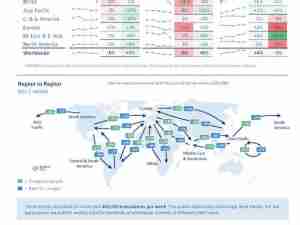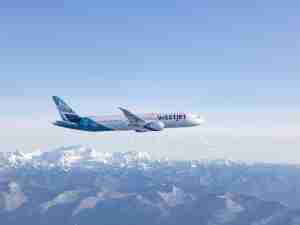Labor and industry analysts and other experts are scratching their heads over the potential tie-up on several points, including the prospect of few new routes and a potential negative impact on overseas alliances.
But labor strife involving flight attendants and ground workers, though mostly pilots, is an overriding concern in an industry where integrating employee groups as part of a merger can be difficult and time consuming even under favorable circumstances.
"If anyone thinks that sitting these groups down together and coming up with a single contract is going to be easy, they're not reading the tea leaves," Pat Friend, president of the Association of Flight Attendants, told Reuters in an interview.
"I'm not even talking about what's happening with the pilot groups -- that's another train wreck waiting to happen," said Friend, whose union represents 21,000 attendants at the two airlines and has expressed 'no confidence' in United's chief executive, Glenn Tilton.
Financial experts also raised concerns.
Standard & Poors credit analyst Philip Baggaley said labor questions were among "principal drawbacks" of a US Airways/United merger. Stifel Nicolaus analyst Hunter Keay said in a research note that pilot discontent was one "unnecessary risk" of a potential deal. Bill Warlick of Fitch Ratings believes labor integration would be "really, really difficult."
Wall Street believes union problems could ultimately undermine projected cost savings and efforts to streamline operations.
Keay and others believe United would have an easier time integrating its workforce with Continental Airlines due to their common pilots' union. The two discussed a pairing in 2008 and investors would react favorably if they were to rekindle their interest and cement a deal now, Keay said.
Prospects of a United/US Airways matchup have boosted shares of those airlines over the past week.
But merger sentiment of pilots at United and US Airways ranges from skepticism that a deal could be successfully negotiated to plainly stated opposition, which undercuts prospects for the sides to work together effectively.
"Our position on mergers is well known. We are not opposed to any merger that would benefit the careers and the long-term future of United pilots. A merger with US Airways does not appear to come close to meeting that standard," Wendy Morse, a United captain and the new chairman of the local union said following word that the two carriers were discussing a deal.
Like its attendants, United's 6,500 pilots are at sharp odds with Tilton and senior management.
The group recently picketed the company's planned joint venture with Aer Lingus, fearful the alliance would trigger job cuts, a point disputed by United. Transatlantic flying is lucrative and is coveted by pilots.
The situation at US Airways has been fractious since a 2005 merger with America West Airlines that rescued the old US Airways from ruin in bankruptcy.
Its 5,000 pilots split into two unions after post-merger attempts to reach a single contract and sort out seniority failed.
The Air Line Pilots Association (ALPA) mainly represents those who fly the old America West routes. The US Airline Pilots Association covers more senior pilots who flew the eastern routes for the old US Airways.
Airline labor groups -- especially pilots -- are difficult to merge because pay and work rules are closely tied to seniority. A pilot could easily lose seniority in a merger and end up flying less desirable routes and planes, ultimately losing pay and making less in retirement and other benefits.
The two unions are now locked in a court battle over seniority.
United and US Airways would likely have to structure any deal so that US Airways was the acquiring company. This is necessary to avoid a contract provision struck during bankruptcy that would restore






